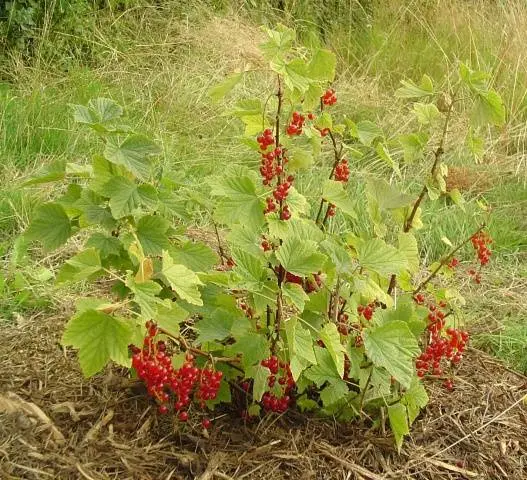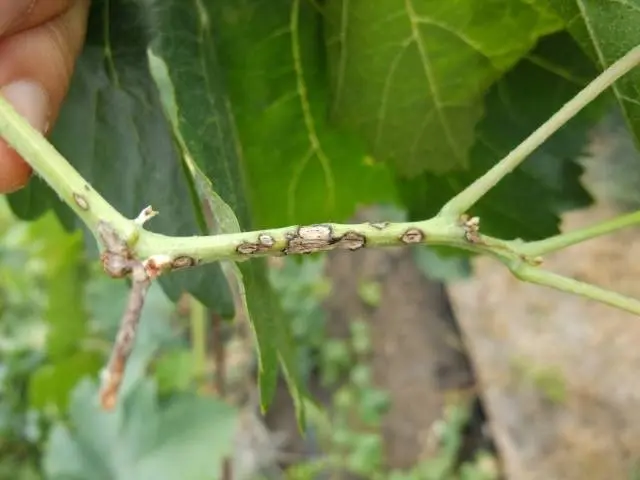Contents
In the autumn, currants need to eliminate excess shoots. How to cut currants in the fall depends on the variety and age of the plants. It is necessary to provide the necessary care annually, regardless of the stage of development of the bush.
Other shrubs are processed in a similar way. Pruning currants, honeysuckle and gooseberries in the fall is done with a pruner.
Benefits of pruning currants
Autumn pruning is a mandatory step in the processing of shrubs. Caring for currants in the fall has several advantages:
- promotes the emergence of new strong shoots;
- nutrients are sent to the ovary;
- the crowding of shoots on the currant decreases;
- in spring, the shrub does not waste energy on the growth of foliage on old branches;
- the risk of spreading pests and diseases is reduced;
- the remaining shoots receive more sunlight;

- due to autumn care, plantings are rejuvenated;
- the duration of the fruiting of the shrub increases to 20 years;
- the productivity of the bush increases;
- facilitates the process of picking berries.
Trimming time
The best time to prune shrubs is autumn. In summer, the plant develops actively, when new shoots appear. Some of them bring a large harvest, while others provide shade and take away the vitality of the bush.
Proper treatment will allow the plant to overwinter and send nutrients to further growth in the spring.
It is necessary to cut black and red currants before the cold weather at the onset of autumn, when the leaves fall and the sap flow stops.
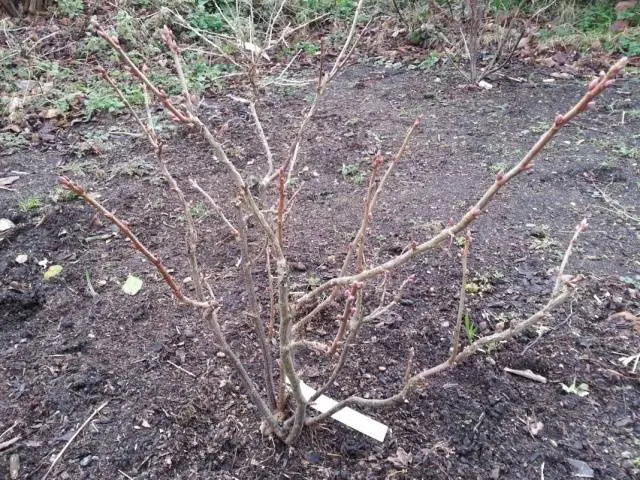
Spring is not the best time to process the bush, since the currant growing season begins early. Spring pruning is done until the end of February.
Not all gardeners have the opportunity to visit the site at the end of winter, so it is better not to postpone the procedure. Then spring care will only include a re-examination of the bush and the removal of frozen shoots.
Pruning principles
In order for the procedure to benefit the plant, you need to adhere to the principles of how to properly cut currants:
- The main purpose of autumn pruning is to give the shoot access to the sun’s rays. If the age of the bush is more than 4 years, then it is formed by 6 large shoots that grow from the base. If the age of the plant is unknown, then you need to pay attention to the color of the wood. Darker bark is characteristic of older branches.
- Pruning bushes starts from the base. Shoots that are more than 5 years old are pruned, even if they do not have external defects. Even with strong shoots, after a certain time, the yield decreases.

- Shoots that appeared in the current year are removed. They can be left if the bush is old, and its fruiting will last another two years. Pruning currants in autumn is a good opportunity to get cuttings. Before winter, they will take root, and in the spring the formation of a new bush will begin.
- Then you need to follow the main shoots. Be sure to prune lateral growths formed in the current or last year. When carrying out work, you need to remember the need to lighten the bush. If the location of the growth is in doubt, then it is better to cut it. If the plant does not receive sunlight, this will negatively affect the yield.
- The upper part of the bush is left unchanged. It forms buds and future berries. Autumn processing of currants is carried out by removing thin tops, since they are most susceptible to winter frosts.

- Before pruning, you need to assess the condition of the shoots. If they have twisted leaves, then this indicates an anthracnose disease. If such signs are found, we cut the shoots. In the presence of thick kidneys, the likelihood of a tick is high. Cut branches are burned to prevent the spread of pests and diseases.
Blackcurrant processing
When working with shrubs, you must follow the basic principles of pruning. Depending on the age of the bush, certain nuances are taken into account. This will help preserve the crop and ensure the normal development of blackcurrants. The pruning process changes for seedlings, two-year-old and older currant bushes and gooseberries, which are processed according to similar principles.
Pruning seedlings
Caring for a currant bush begins in the early stages of its development. If you do not pay attention to this procedure, then the shrub will grow sprawling and eventually lose the ability to produce a high yield.

Planting a bush is carried out in prepared holes, the dimensions of which are about 50 cm. The depth of the pit should be 40 cm. The bushes are lowered into the pits at an angle of 45 degrees so that the root collar remains at a depth of 5 cm. Then the roots are straightened and covered with earth. After watering the seedlings proceed to pruning.
In seedlings, the top of the shoots is cut off, leaving 2-3 buds. A currant bush should include no more than 4 shoots, which will allow you to get a good increase during the growing season. The height of the seedling should be 25-40 cm. In a year, the plant will be able to release up to 6 new shoots.
Trimming is shown in the diagram:

Pruning a two-year-old currant
In the second year of shrub development, the first pruning is carried out in July. The branches of the bush need to be shortened by 2 buds, which is usually about 10 cm. This procedure activates the vitality of the bush, which will give an increase before the end of the year.
Blackcurrant pruning in autumn is carried out until the end of October. If the plant has a lot of side branches, then they must be removed. Weak branches that create a shadow and interfere with the development of other shoots must be eliminated. They will not have time to form and will be too weak to withstand the winter frosts.
As a result, the plant will not receive enough nutrients. In any case, frost-damaged shoots will have to be removed in the spring.
Pruning schemes are as follows:
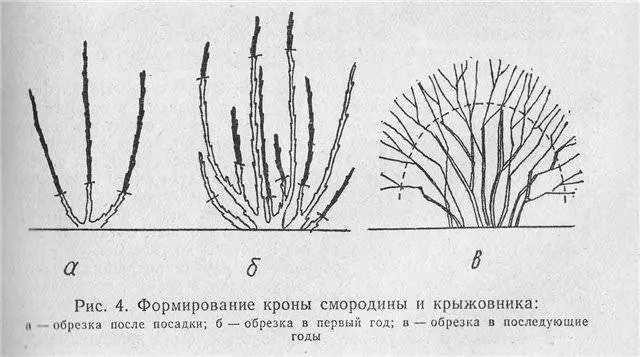
Pruning adult bushes
In currants at the age of 3 years, a lot of shoots are formed. An adult bush contains 15 to 20 branches growing from the ground. In autumn, be sure to prune weakened shoots that have not received the necessary development.
Annual shoots are pruned in mid-July, leaving no more than 4 buds. Dry and damaged branches are also subject to pruning. As in the previous year, annual shoots must be eliminated, and the most promising of them are left.
When you cut off the extra branches, you need to pay attention to the old shoots. From the fifth year, blackcurrants need to be rejuvenated. Old branches are removed at the root. If the branches lie on the ground, then they are also cut off, leaving no stumps. If a lichen grows on a bush, it must be eliminated.
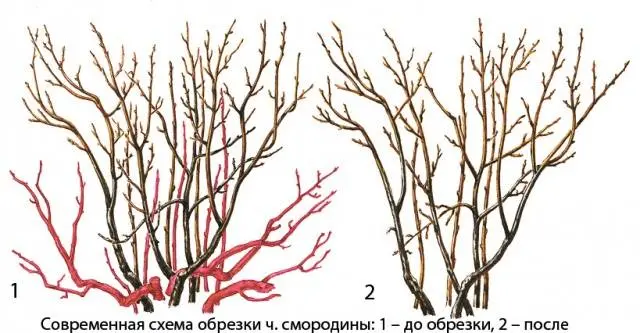
Red and white currant processing
Red and white currants have their own characteristics that must be considered when caring for the bushes. When processing seedlings, a similar scheme is used, as for blackcurrant.
In autumn, 3-4 of the strongest shoots are left near the shrub. If the shrub grows slowly, then it is enough to shorten the branches by 1/3 of their length.
The duration of fruiting of one branch of red currant is about 8 years. Therefore, the autumn bush should contain shoots of various ages. The total number of branches should be about 15-20.
Caring for a shrub with red and white berries is less expensive. The plant does not develop as quickly as blackcurrant. Therefore, pruning currants in the fall has a preventive character. If too many branches are eliminated, then the yield of the bush will drop sharply.
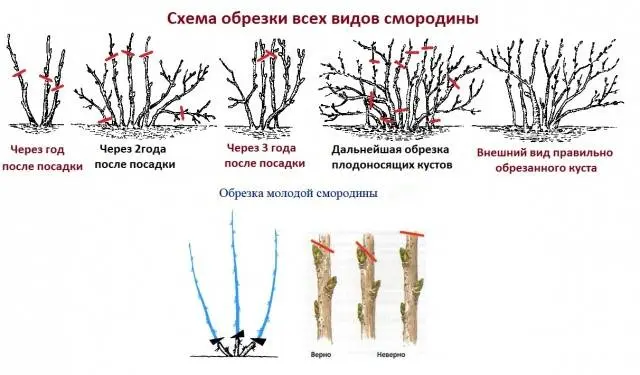
Shrubs with red and white berries do not require frequent rejuvenation. It is necessary to prune branches, the age of which reaches 7 years. As a result, three basal shoots remain.
Conclusion
Currant pruning is carried out in spring or autumn. Spring processing is carried out as early as possible, until the process of sap flow has begun. The optimal time for processing bushes is autumn. Seedlings, young and adult plants are subject to pruning. It is especially important to form a bush for currants that have not reached the age of two.
The gooseberry and currant bush is processed by removing excess, dry and old shoots. Red currant grows more slowly, so it is much easier to care for it. With proper processing, the fruiting period of the bush increases, which gets the opportunity for normal development.
The order of work is presented in the video:










